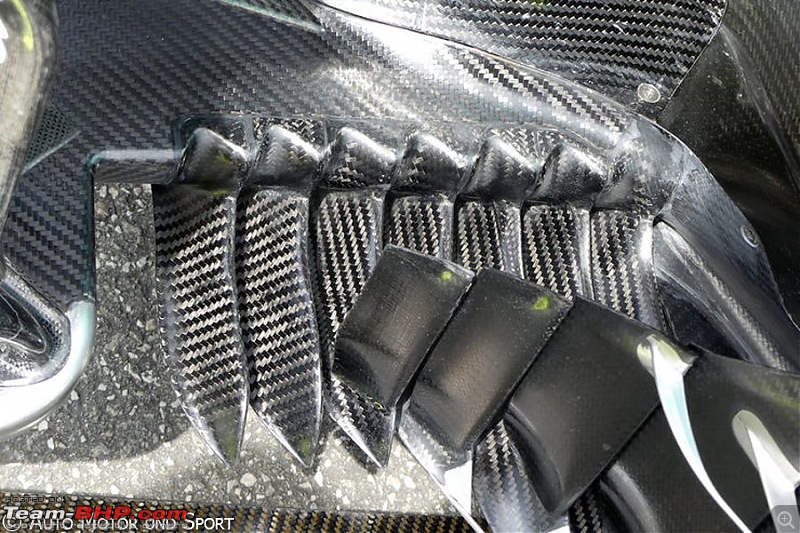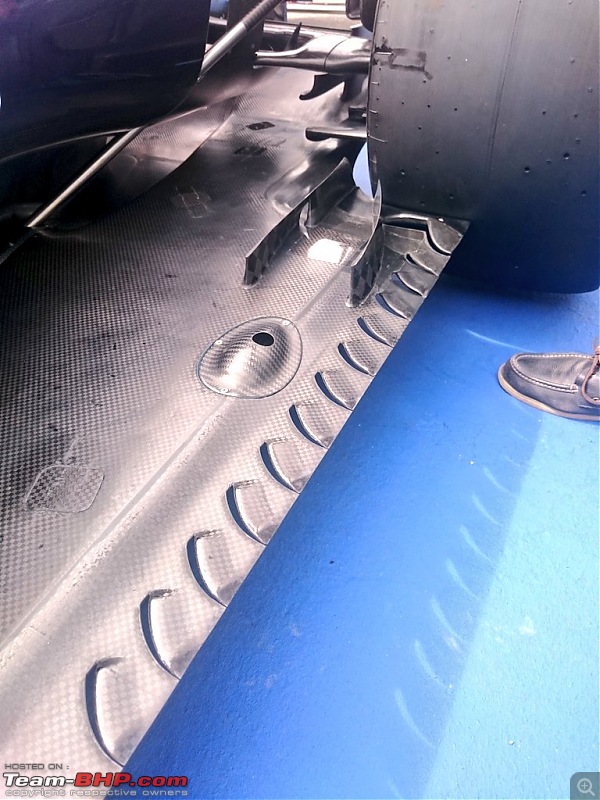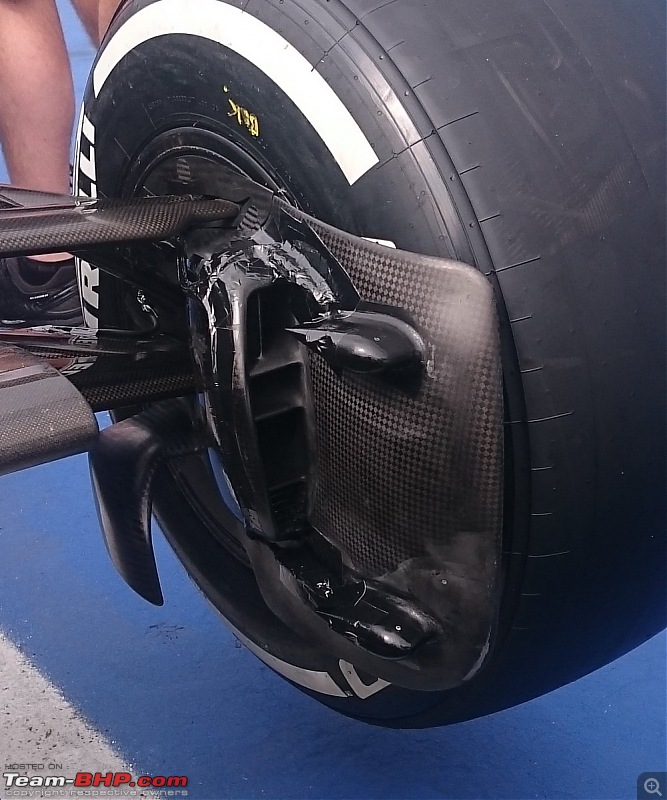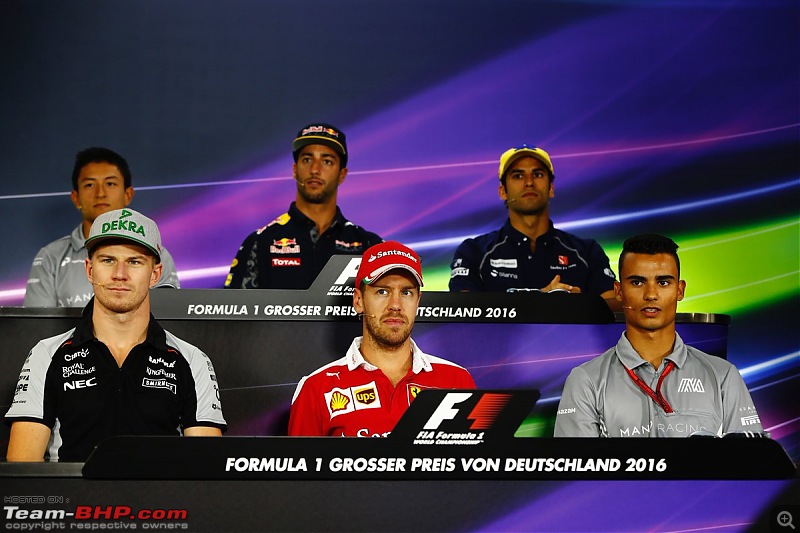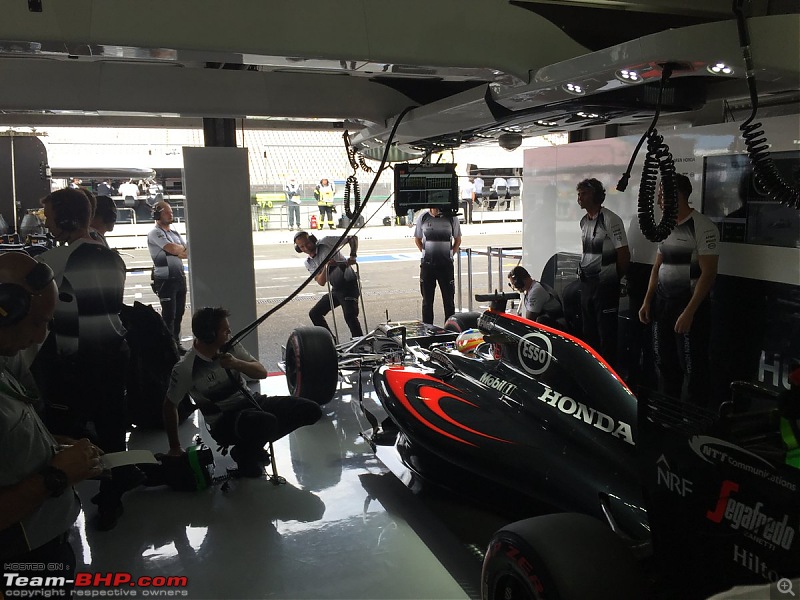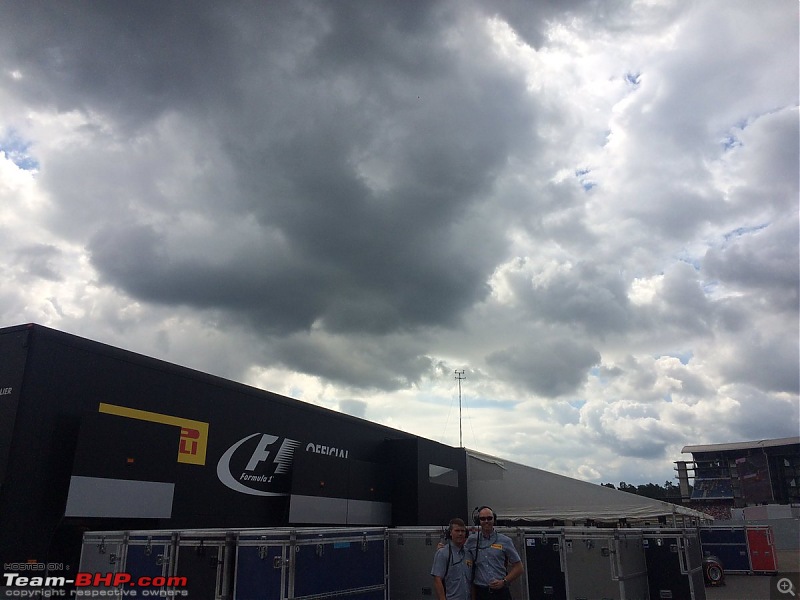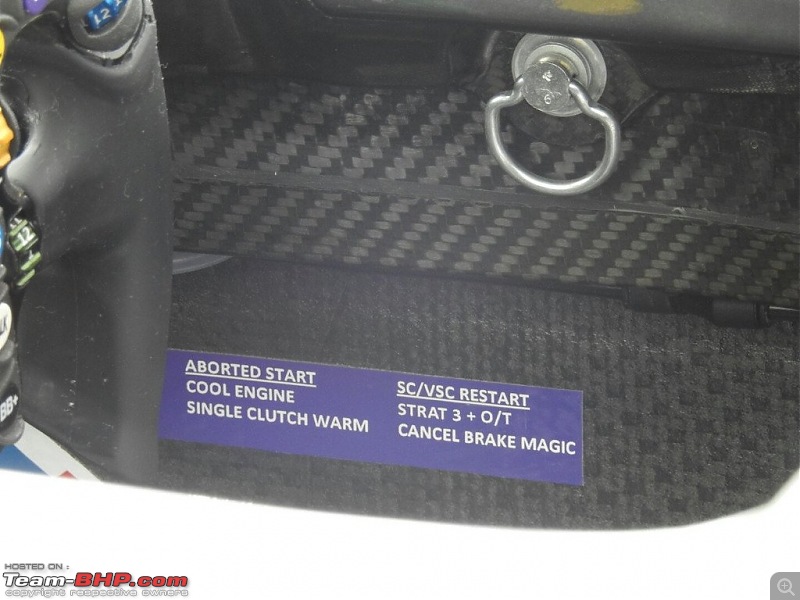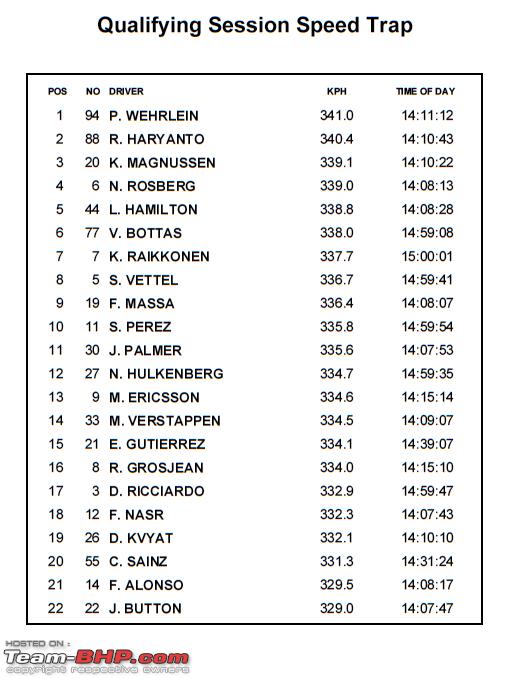
Following last weekend’s race at the Hungaroring, teams and drivers have made the short journey from Budapest to Hockenheim, for the German Grand Prix.
Michael Schumacher holds the record for most German Grand Prix wins (4) in the modern Formula One era, with Fernando Alonso the best of the active drivers with 3. While Alonso is unlikely to add to his victories, he could well be joined on 3 wins by Lewis Hamilton, who won here on 2008 as well as on 2011.
Timings in IST:  Circuit details:
Circuit details: 
Circuit length : 4.574km/2.842 miles
Race distance : 67 laps (full world championship points will be awarded after 75 per cent distance/51 laps)
Distance to Turn One : 260m/0.162 miles
Longest straight : 1.14km/0.708 miles, on the approach to Turn Six
Top speed : 350km/h/217mph, on the approach to Turn Six
Pitlane length : 300m/0.186 miles, estimated time loss 22s
Full throttle : 60 per cent
Gear changes : 49 per lap /3,283 per race
DRS zones : Two, on the approaches to Turns Two and Six
Fuel consumption : 2.1kg per lap, which is relatively high
ERS demands : Medium. The sharp bursts of acceleration from low speed are demanding on ERS, but there are several opportunities around the lap to harvest energy under braking – into Turns Two and Six in particular.
Brake wear : Medium. There are some challenging braking zones, but the long straights provide opportunities to cool the brakes
Safety Car likelihood : Low. In nine races at the re-profiled Hockenheim there have been just three Safety Car periods, most recently in 2014 following a collision on lap one
Weather conditions forecast : 29 degrees, Expected to be showers in the area.
Hockenheim is considered a power circuit, thanks to a sequence of medium length straights in the opening half of the lap on which cars will accelerate to more-than 330km/h before braking heavily at the Turn Six hairpin with a deceleration of up to 6g to take the corner at around 75km/h. Heavy braking and the multiple lines through the corner make this the prime overtaking spot on a lap of Hockenheim. The hairpin, and the demands of the lower-speed stadium section at the end of the lap, create scope for interesting setup compromises, contrasting the needs for a stiff, low-drag car on the faster sections with the traction and downforce demands of the slower parts of the circuit.
History:
Hockenheim will sadly always be remembered as the track where the great Jim Clark tragically lost his life 1968 while competing in a Formula Two race. The circuit has gone through a number of incarnations since it was originally constructed back in 1932.
2002 saw a major change in the track, giving us the layout we have today, when Hermann Tilke was called in to create a new and more manageable circuit – removing the long blasts out to into the forest and back. There was a small bit of Tilkering with the stadium section, but the main change was in adding a whole new section to the track, starting with the new turn 2 and bringing the track across through the forest to rejoin the old track at the stadium section in turn 12.
The German Grand Prix appeared in the Formula One World Championship since 1951 and was held at the Nurburgring (Nordschleife). In 1959 the German Grand Prix was held at AVUS (Acronym for Automobil-Verkehrs und Ubungs-Strasse – Automobile Traffic and Practice Street) in Berlin, a public road, and when in use for racing consisted of two long parallel straights connected at either end by two curves, giving an ultimate high speed track. The track having been modified to include serious high banking at the north curve (an incredible 43 deg), with the race being run in 2 heats and aggregate times used to determine the result due to fears for the tyres at the ultra fast circuit.
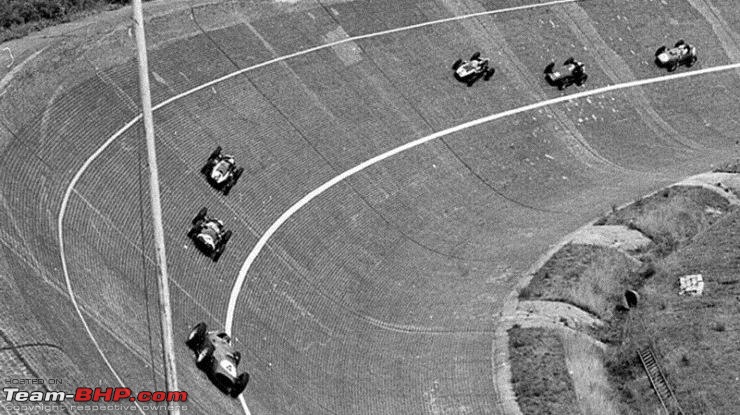
The Grand Prix returned to the Nurburgring in 1960.
The Nurburgring, dubbed the Green Hell by Jackie Stewart, was one of the truly iconic tracks in Formula One’s history. The Nordschleife layout was almost 21km long, with 73 turns, and the track had a massive 300 m in elevation change. A supreme challenge for the drivers, but also a dangerous one, with numerous fatalities at the venue.
In 1970, the drivers came together to demand improvements to safety at the Nurburgring, forcing the race to be moved to the new Hockenheimring for that year while modifications were made to the Nurburging. The Grand Prix returned to the Nurburgring in 1971, and continued on there until 1976, with James Hunt winning there for McLaren in a race marred by a crash for runaway championship leader Niki Lauda that saw the Austrian trapped in his burning Ferrari and suffering serious burns.
The German Grand Prix continued to be held between the Hockenheimring and Nurburgring till 2014. Last year the German Grand Prix fell from the calendar, as the Nurburgring was unable to host due to financial difficulty.
What to expect in 2016?
The crowd will expect another victory for Mercedes, and preferably with Nico Rosberg at the front.
Lewis Hamilton will be out to stop that however, and having won five of the last six races it’s a realistic possibility. But having moved ahead with his win in Hungary Hamilton must turn his attention to his power units situation. Hamilton is already on his fifth example of some power unit components. He is likely to need a sixth and seventh before the season is over, which will incur a stiff grid penalty. Will he take it here and handover a Home victory to Nico or will he prefer to stamp his authority on this year’s championship before taking the summer break. I think the later will be his choice.
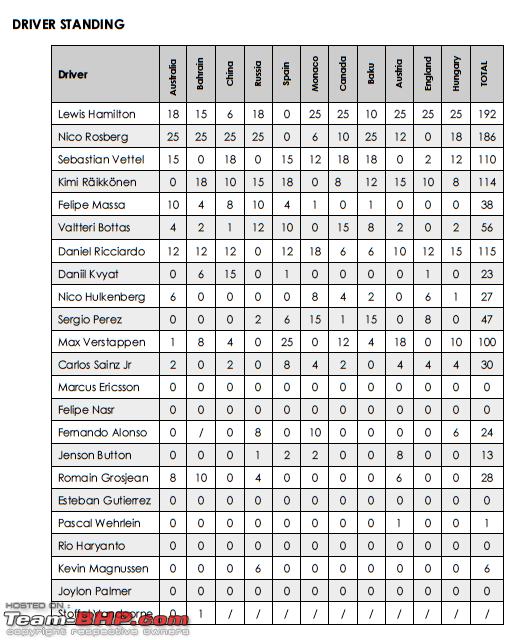
F1 seems a like a 3 tier championship increasingly. In Tier 2 Red Bull are within a point of Ferrari, and certainly look like an outfit full of confidence. The Hockenheimring with its mix of twisty stadium section and long straights will provide an interesting test for both outfits, highlighting both the strengths and weaknesses of both teams, but Ferrari continue to have the feel of a team one race away from a crisis. Ferrari tend to do well at the Hockenheimring. They won five of the nine races at the track since its 2002 Tilkering.
In Tier 3 Williams desperately need to rediscover form if they are to keep Force India at bay, but recent form has done nothing to suggest they can produce a good enough result for that. Force India have been quietly impressive this year and lie just 20 points behind fellow Mercedes engine customers Williams.
The long straights of Hockenheim should handicap McLaren and Torro Rosso, so maybe providing an opportunity for Haas to sneak back into the minor points placings.
 Tyres:
Tyres:  PAUL HEMBERY, PIRELLI MOTORSPORT DIRECTOR:
PAUL HEMBERY, PIRELLI MOTORSPORT DIRECTOR:
“Hockenheim will be a bit of an unknown quantity: we’ve not raced there for two years, and even before then it was a race that alternated with the Nurburgring, so everybody is lacking historical data compared to other venues we visit. The cars are obviously going a lot quicker than they were in 2014, which is why we have introduced a tyre nomination that is a step harder compared to last time. The most notable feature of that 2014 race was the variable weather: on race day track temperatures were 20 degrees cooler than they had been on the very hot qualifying day. With the German Grand Prix taking place at the same time of year again, there is obviously the potential for similar variation.”
Sources : FIA preview & media kit, teams & Pirelli previews.
 (5)
Thanks
(5)
Thanks
 (1)
Thanks
(1)
Thanks

 (1)
Thanks
(1)
Thanks
 (1)
Thanks
(1)
Thanks
 (1)
Thanks
(1)
Thanks
 (1)
Thanks
(1)
Thanks
 (3)
Thanks
(3)
Thanks
 (1)
Thanks
(1)
Thanks


 (1)
Thanks
(1)
Thanks



















